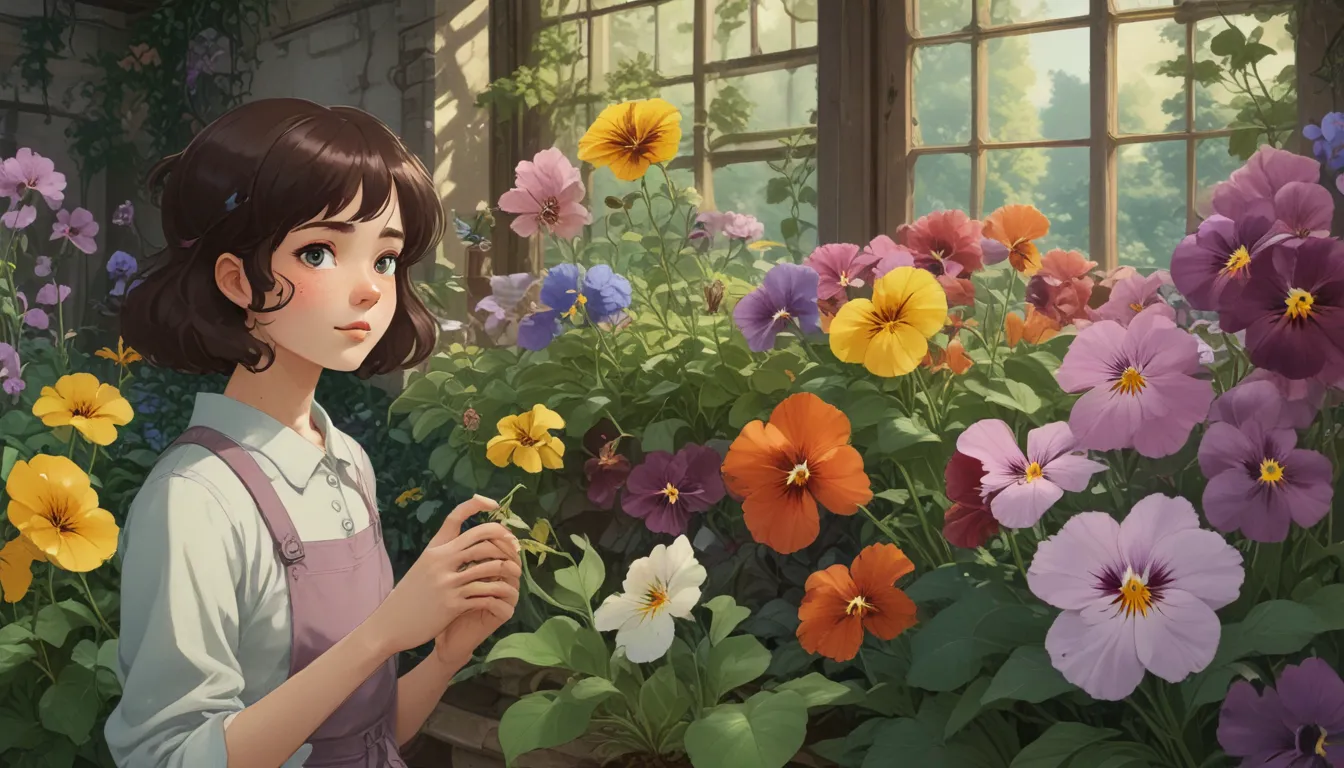The Ultimate Guide to Identifying and Managing Pansy Pests

Pansies are delightful flowering plants that bring a burst of color to any garden. These charming flowers, also known as Viola × wittrockiana, come in a variety of single hues and multicolor combinations, giving them a unique appearance that resembles a cheerful face.
Typically grown in Zones 6 to 10, pansies belong to the violet family and are classified as short-lived evergreen perennials that are often cultivated as annuals. Cultivating pansies requires organically rich, moist, well-draining soil and a location that receives full sun to partial shade. When growing these lovely blooms, it’s essential to be aware of common pests that could potentially harm them.
In this comprehensive guide, we will explore nine common pests that may plague your pansy plants. From aphids to whiteflies, we’ll cover their physical characteristics, methods for prevention, and treatment options to ensure your pansies remain healthy and vibrant. Let’s dive into the world of pansy pests and learn how to combat them effectively.
Understanding 9 Common Pansy Pests
-
Aphids: Soft-bodied sapsuckers that damage plant tissue, causing deformation and yellowing.
-
Beetles: Various types of beetles that chew on leaves, leaving irregular holes and pitting.
-
Caterpillars: Larvae of butterflies and moths that feed on foliage, resulting in chewed leaves and stunted growth.
-
Gall Midges: Maggot-like larvae that bore into pansy foliage, creating gall-like structures.
-
Mealybugs: Scale insects with a waxy exterior that feed on plant sap, leading to sooty mold outbreaks.
-
Scale: Sapsucking insects with a waxy shell that damages foliage and leaves plants vulnerable to diseases.
-
Slugs and Snails: Gastropods that feed on pansy leaves, leaving ragged holes and slime trails.
-
Spider Mites: Tiny arachnids that create webbing on leaves and cause bronzing and stunted growth.
-
Whiteflies: Winged insects that suck plant sap, leading to wilting and yellowing of leaves.
To keep your pansies healthy and pest-free, follow these strategies for identification, prevention, and management of common pests.
1. Aphids
Aphids are notorious for causing damage to pansies by sucking plant sap and secreting toxins that lead to deformed foliage. To prevent and manage aphid infestations, consider the following approaches:
Cultural Controls
- Avoid overfertilizing pansies with nitrogen-rich products.
- Maintain adequate moisture levels to prevent stress on plants.
- Interplant with aromatic herbs like dill and fennel to deter aphids.
- Keep the garden free of weeds to reduce host plants for aphids.
Mechanical Controls
- Apply food-grade diatomaceous earth around pansies as a natural insecticide.
- Use insecticide-free yellow sticky traps to attract and trap aphids.
- Dislodge pests with a strong spray of water from the garden hose.
Organic Controls
- Use organic insecticides like azadirachtin and Beauvaria bassiana to kill aphids.
- Introduce natural predators like green lacewings and ladybugs to reduce aphid populations.
- Apply organic solutions like insecticidal soap or neem oil for control.
2. Beetles
Beetles are common pests that chew on pansy foliage, leaving behind irregular holes and damage. To address beetle infestations, consider the following control measures:
Cultural Controls
- Avoid planting pansies near vegetable crops to deter beetles.
- Use reflective silver mulch as a deterrent for beetles.
- Keep the garden free of weeds and debris to reduce beetle habitats.
Mechanical Controls
- Hand-pick and remove beetles from plants.
- Set up traps and barriers to capture beetles.
- Apply diatomaceous earth to inhibit egg-laying and larval development.
Organic Controls
- Use natural predators like beneficial nematodes and parasitic predators to control beetle populations.
- Apply organic insecticides like neem oil or Beauvaria bassiana for beetle management.
3. Caterpillars
Caterpillars are common pests that feed on pansy foliage, resulting in chewed leaves and stunted growth. To address caterpillar infestations, consider the following control strategies:
Cultural Controls
- Grow pansies away from other susceptible plants to reduce caterpillar habitats.
- Keep the garden free of weeds and debris that may shelter caterpillars.
Mechanical Controls
- Hand-pick and destroy caterpillars from plants.
- Use garden netting to protect pansies from caterpillar infestations.
Organic Controls
- Apply microbial insecticides like Bacillus thuringiensis to control caterpillar populations.
- Release predatory insects like lacewings and ladybugs to feed on caterpillars.
Chemical Controls
- Use synthetic pesticides containing pyrethroids to treat caterpillar infestations.
By implementing these strategies and techniques, you can effectively manage caterpillar pests and protect your pansy plants.
4. Gall Midges
Violet gall midges are a lesser-known pest that bore into pansy foliage, creating gall-like structures. While infestations are rare, it’s essential to remove and dispose of affected foliage to prevent damage.
5. Mealybugs
Mealybugs are scale insects that feed on pansy sap, leading to sooty mold outbreaks. To control mealybugs, consider the following approaches:
Cultural Controls
- Avoid overfertilizing pansies with nitrogen-rich products.
- Maintain adequate moisture levels to prevent dry conditions.
Mechanical Controls
- Dislodge mealybugs with a firm spray of water from the garden hose.
Organic Controls
- Use organic insecticides like azadirachtin and Beauvaria bassiana to manage mealybug populations.
- Apply horticultural oils like neem oil to control mealybugs effectively.
Stay Tuned for Part 2…
Stay tuned for the continuation of this comprehensive guide, where we’ll explore additional pests affecting pansies, including scale, slugs, snails, spider mites, and whiteflies. Learn how to identify, prevent, and manage these common pests to keep your pansy plants thriving and beautiful.
Remember, a healthy garden starts with proper pest management, so be proactive and stay informed on how to protect your beloved pansies. Together, we can create a vibrant and pest-free garden for all to enjoy.





